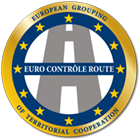While road transport within the EU is harmonised and thus based on common EU rules, road transport between EU and non-EU countries (third countries) is still largely based on bilateral agreements between individual Member States and third countries. However, with certain countries, the EU has concluded agreements which take precedence over bilateral agreements.
- the Land Transport Agreement with Switzerland
- the Alpine Traffic Observatory
- the EEA agreement
The Agreement on the European Economic Area basically extends the EU internal market to Norway, Iceland and Liechtenstein. As regards road transport, this entails that these three countries apply the EU road transport rules just like EU Member States. Annex XIII of the EEA Agreement contains the EU transport acquis and is regularly updated by decisions of the EEA Joint Committee.
- the Interbus agreement
As regards passenger transport, the INTERBUS agreement covers occasional services between the EU and Ukraine, Turkey, Albania, Bosnia-Herzegovina, FYROM, Montenegro and Moldova. In December 2014, the Council has given a mandate to the Commission to negotiate an extension of the scope of the agreement to cover also regular services, and to find ways allowing Morocco to become a Member.
The agreement provides for a harmonised regulatory framework to facilitate passenger services between these countries.
- the AETR agreement
The AETR agreement concerns the work of crews of vehicles engaged in international road transport. The agreement covers 49 contracting parties including all EU Member States. Its provisions are aligned with current EU legislation on driving times, breaks and rest periods. In 2006, the AETR agreement was amended in order to introduce the use of the digital tachograph, which became mandatory for contracting parties in 2010.
source DG Move
